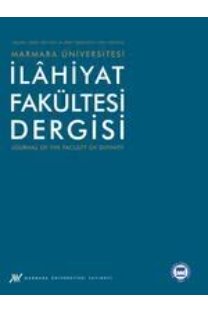A Brief Overview: Breaking of Islamic Tradition of Education in Malaya
Bu makalede, Malaya’da Müslüman Malay toplumunda önemli bir eğitim kurumu olarak işlev gören ve Kur’an Okulları veya Kur’an Sınıfları adıyla bilinen geleneksel dini eğitim kurumları ile İngiliz sömürge yöneticilerinin inisitayif ile hayata geçirilen Malay Okulları arasındaki ilişki ele alınmaktadır. 19. yüzyıl ilk yarısından itibaren gerek Thomas Stamford Raffles, Frank Swettenham ve Richard J. Wilkinson gibi yöneticilerin bireysel inisiyatifleri, gerekse sömürge yönetiminin eğitim politikası vasıtasıyla hayata geçirilen Malay Okulları, geleneksel eğitim kurumlarının dönüşümünü hedeflemesi dolayısıyla Malay toplumu genelinde dikkat çekici sosyo-kültürel değişimlerin hazırlayıcısı olduğu görülür. Bir sosyal mühendislik çabası olarak da değerlendirilebilecek olan geleneksel Malay eğitim sistemi çeşitli boyutları ile ele alınmaktadır
Anahtar Kelimeler:
Kur’an okulları/sınıfları, Malay dili, Thomas Stamford Raffles
A Brief Overview: Breaking of Islamic Tradition of Education in Malaya
This article attempts to explore the relationship between Qur’an schools or classes and vernacular Malay schools, as also the metamorphosis of the native educational system into a modern rational institution. This transformation process initially commenced as a personal initiative of some British administrators such as Thomas Stamford Raffles and R. J. Wilkinson, and eventually led to an overhaul of the existing educational system into an organized secular format by the authorities of the British colonial administration around the second part of the 19th century. The rational basis of the establishment of Qur’an schools or classes was a direct impact of being a Muslim community. After accepting Islam as the ‘national religion’, Malays initially adopted the Arabic alphabet as their writing script in a common cultural and religious process experienced in almost all Islamic communities around the world. Since Islam is regarded as the source for acquiring practical knowledge in daily community life, Malays established Qur’an schools in order to educate their future generations. In the process, the implementation of this system of education created its own tradition and was internalised within the community. However, the arrival of the British as colonialists altered the scenario somewhat. They were regarded as catalysts in the transformation of Malay society, spearheading their thrust first by making inroads into the existing system of education. Planned as a short view on the issue, this treatise has a limited focus on general policies, and on some distinguished figures such as Thomas Stamford Raffles, Frank Swettenham and especially Richard J. Wilkinson who are perceived as having taken the initial initiatives on the setting up of Malay vernacular schools. The research is based on the period starting from approximately the beginning of the 19th century, and its direct results on the developments concerning educational transformation until the first decades of the 20th century. The attempts of the aforementioned British officials at social engineering in Malaya, through the establishment of vernacular schools, contributed to the transformation of the traditional Qur’an schools.
- ISSN: 1302-4973
- Başlangıç: 1963
- Yayıncı: Marmara Üniversitesi
Sayıdaki Diğer Makaleler
Hanefî Fıkıh Düşüncesinde Akıl Kavramı ve Dört Mertebeli Akıl Anlayışı
İslâm Dini Açısından Tenâsüh ve Reenkarnasyon
Kitâbü’l-Lüm‘a’ya Göre Eşarî’nin Kesb Teorisinin Yeniden İncelenmesi
Bunyamin ABRAHAMOV, Hayrettin GÜDEKLİ, Hayrettin GÜDEKLİ
İrfânî Yorum ve Şâirin Niyeti Gazzâlî’nin Şiir Anlayışı Üzerine Bir İnceleme
Akifzâde’nin Mecelletü’l-Mehâkim İsimli Eseri Çerçevesinde Osmanlı Fetvasında Değişim
A Brief Overview: Breaking of Islamic Tradition of Education in Malaya
Kelâm[cıların] Atomları ve Epikürcü Minimal Parçalar
İslamî Bir Antropolojinin Unsurları
Salbo MAUROOF, Saibo Mohamed MAUROOF, Sinan YILMAZ
IX. [III.] Yüzyıl Boyunca Nesih: Şafiî, Ebû Ubeyd, Muhâsibî ve İbn Kuteybe
